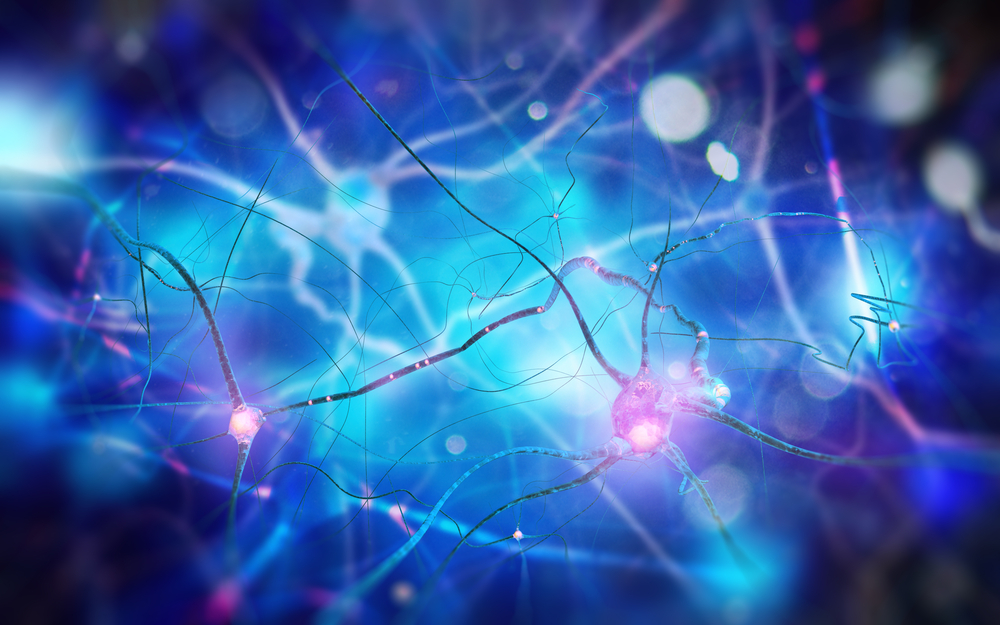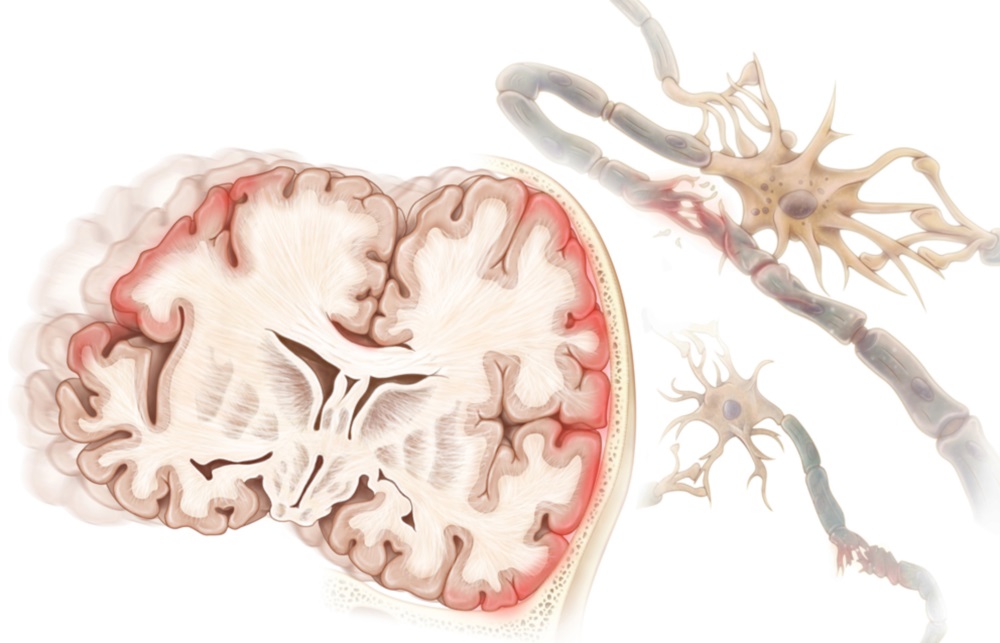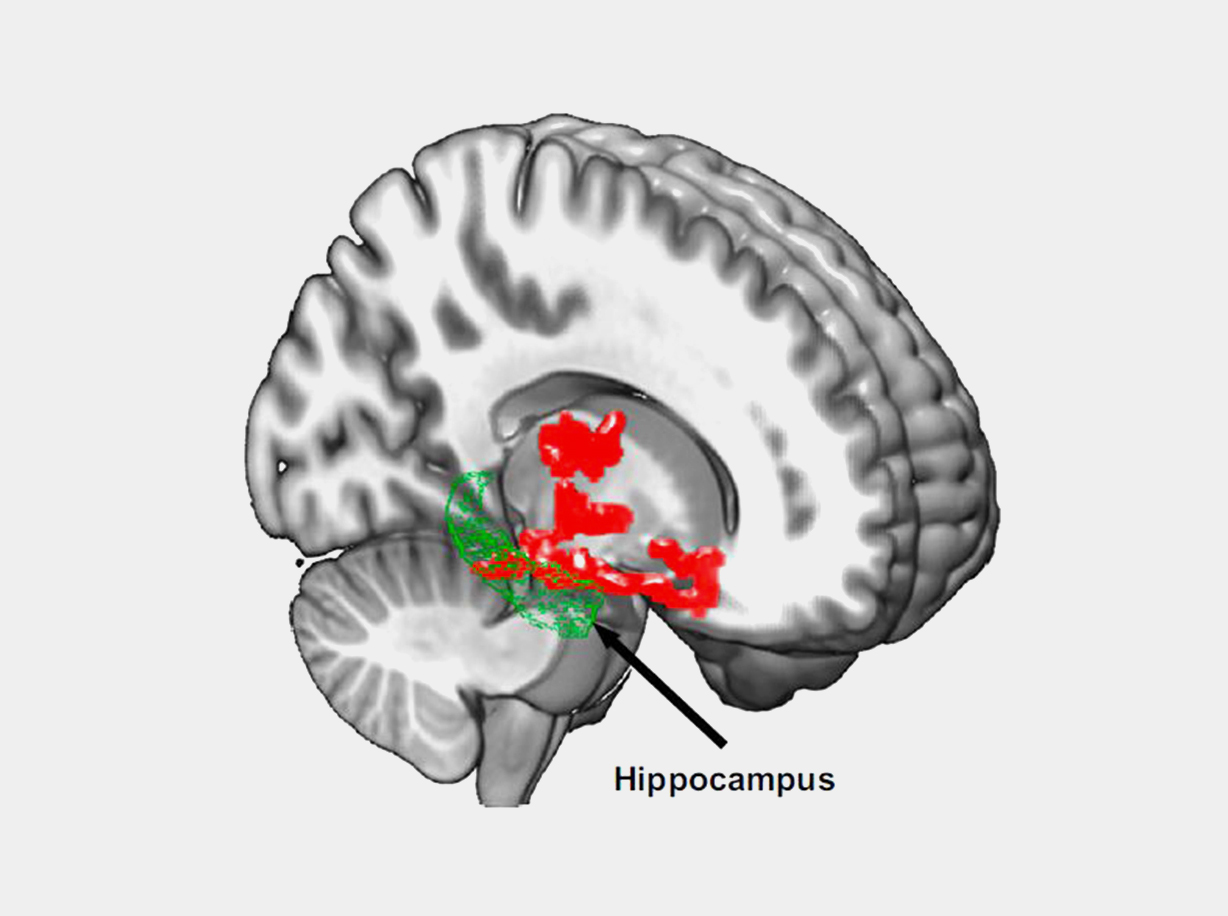They found a robust overlap between ALS and frontotemporal dementias, including corticobasal degeneration and progressive supranuclear palsy, but not between ALS and Parkinson’s or ALS and Alzheimer’s disease.
The ALS data set comprised 31 independent cohorts, including 12,577 patients and 23,475 controls (Van Rheenen et al., 2016).
Shared Risk.
Indeed, a recent paper reported slower axonal transport in neurons derived from healthy MAPTH1 carriers (Beevers et al., 2017).
To dissect potential effects of the shared SNPs, the authors looked for expression quantitative trait loci that associated with them.
Posts published in “Research”

In February, the Consortium for Detecting Cognitive Impairment, Including Dementia (DetectCID) held its kickoff meeting in San Francisco.
Neurology Today spoke with Roderick Corriveau, PhD, program director at the NINDS, about the problem of dementia detection in the U.S. and about DetectCID.
Cognitive impairment including dementia is really severely underdiagnosed in the United States.
We want to try to achieve this goal of detecting dementia in primary care by focusing on the simplicity of the problem.
There is going to be multisite development and consortium-based validation of paradigms for detecting cognitive impairment in primary care.

In a collaboration between Wave Life Sciences and UMass Medical School, scientists aimed to target RNA molecules that contain the G4C2 expansion using tiny stereopure ASO molecules, which bind to RNA.
With this approach, investigators intended to prevent the accumulation of the abnormal molecules while avoiding changes in C9orf72 protein levels.
They then confirmed the activity of these ASO sequences in patient-derived fibroblasts and in mouse neurons under a microscope.
Researchers optimized the ASO chemistry, which resulted in potent, stereopure ASOs, as confirmed in the activity assays.
“These results suggest that preferential targeting of repeat-containing transcripts using stereopure ASOs may be a viable therapeutic approach for the treatment of ALS and [frontotemporal dementia],” the researchers wrote.

Traumatic Brain Injury Associated With Increased Risk for DementiaShare this content:linkedingoogleEmailPrintResearchers in Denmark conducted a nationwide observational cohort study with 2.8 million adults at risk for dementia for a total follow-up period of 27.6 million person-years between 1999 and 2013.
Research published in The Lancet found that traumatic brain injury (TBI) was associated with an increased risk for dementia compared with no history of TBI or with non-TBI trauma.
The risk for dementia also increased with an increased number of TBIs; patients with ≥5 TBIs had a significantly higher risk (HR 2.83; 95% CI 2.14-3.75) than patients with 1 TBI (HR 1.22; 95% CI 1.19-1.25).
Men with a history of TBI were at a slightly higher risk for dementia than women with the same history.
Long-term risk of dementia among people with traumatic brain injury in Denmark: a population-based observational cohort study [published online April 10, 2018].

Continuous use of antiepileptic medications leads to an increased risk of Alzheimer’s disease and dementia, according to a recent study.
The study, “ Use of Antiepileptic Drugs and Dementia Risk — an Analysis of Finnish Health Register and German Health Insurance Data ,” appeared in the Journal of American Geriatrics Society.
Researchers compared the risk of dementia and antiepileptic medications both with and without known cognitive adverse effects.
Specifically, using therapies that are known to impair cognitive function correlated with a 20% greater risk of Alzheimer’s and a 60% greater risk of dementia.
The most frequently used medications with known cognitive effects include primidone, phenytoin, carbamazepine, clonazepam, and valproate.

Lack of sleep may be linked to risk factor for Alzheimer’s diseasePreliminary NIH study shows increased levels of beta-amyloid.
In Alzheimer’s disease, beta-amyloid proteins clump together to form amyloid plaques, a hallmark of the disease.
While acute sleep deprivation is known to elevate brain beta-amyloid levels in mice, less is known about the impact of sleep deprivation on beta-amyloid accumulation in the human brain.
In Alzheimer’s disease, beta-amyloid clumps together to form amyloid plaques, negatively impacting communication between neurons.
In Alzheimer’s disease, beta-amyloid is estimated to increase about 43 percent in affected individuals relative to healthy older adults.

Dr. Lilian Calderón-Garcidueñas said her group studied 203 autopsies of Mexico City residents ranging in age from 11 months to 40 years.
Metropolitan Mexico City is home to 24 million people exposed daily to concentrations of fine particulate matter and ozone above U.S. Environmental Protection Agency standards.
Researchers found hallmarks of the disease among 99.5 percent of the subjects they examined in Mexico City.
Overall, the authors have documented an accelerated and early disease process for Alzheimer's in highly exposed Mexico City residents.
"Defining pediatric environmental, nutritional, metabolic and genetic risk-factor interactions are key to preventing Alzheimer's disease."

Standing for a two-hour chunk during the work day, that study found, may lead to physical discomfort all over the body, and make it harder to stay focused and energized.
So if it’s not great to sit or stand all day, what should you do at the office?
The best way to make a choice for yourself, he says, is to consult your doctor.
That said, Isaacson says the bulk of scientific evidence supports the notion that we should minimize time spent sitting.
(He does recommend wearing supportive shoes and standing on a soft mat, to reduce strain on the back and joints.)

Association Between Psychosis and Development of Dementia in Older MenShare this content:linkedingoogleEmailPrintThe authors recruited 37,770 men aged 65 to 85 from the Australian Electoral Roll between 1996 and 1998.
The authors recruited 37,770 men aged 65 to 85 from the 1996 to 1998 Australian Electoral Roll.
During the 17.7-year study, dementia developed in 21.4% (n=8068), and 23,999 (63.5%) died during follow-up.
Continue Reading BelowDementia developed approximately 3 times more frequently in people in whom a psychotic disorder was present.
These disorders included schizophrenia, persistent delusional disorders, acute and transient psychotic disorders, schizoaffective disorders, and other non-organic or unspecified psychotic disorders.

In advanced Alzheimer's disease, huge numbers of nerve cells in the brain are dead.
But the erroneously folded forms of amyloid beta do not accumulate only in nerve cells.
Amyloid deposits are also found in the blood vessels of the brain, in the retina, and in cells known as glial cells.
"In this study we expressed the amyloid beta 1-42 in glial cells instead, and observed that huge amounts of aggregate accumulated around these cells.
"We noted that glial cells seem to produce the mature, less harmful form of amyloid beta, while neurons cannot.
